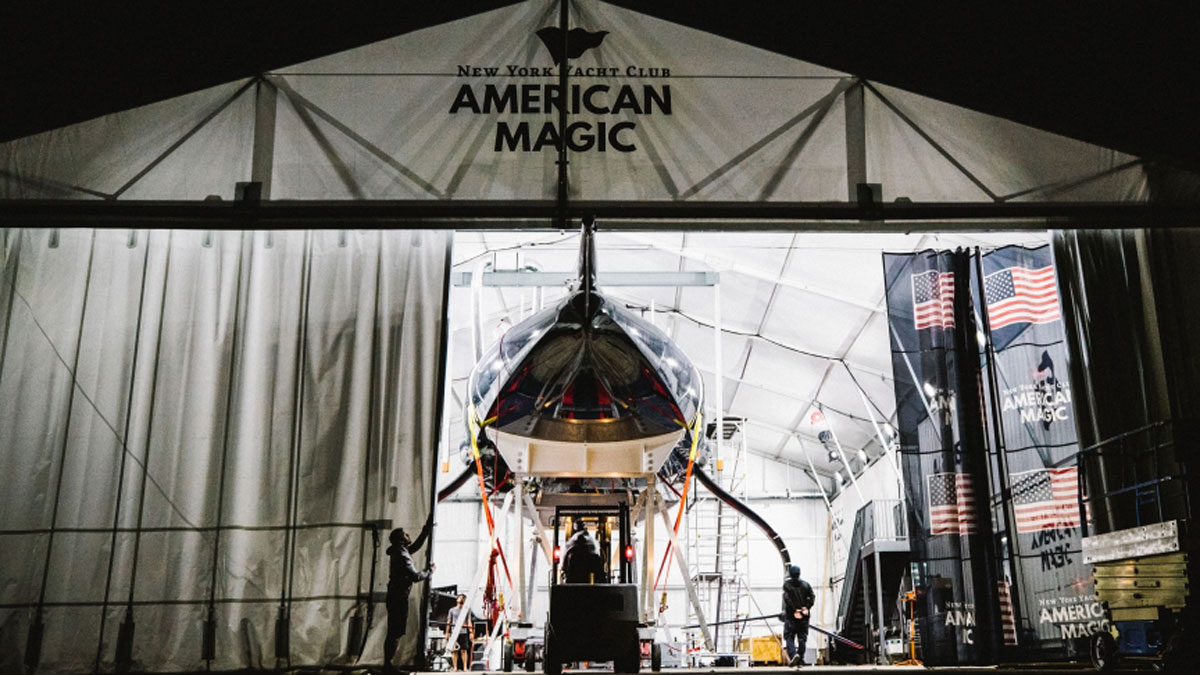Some history
According to Britannica, the esteemed trophy was first offered as the Hundred Guinea Cup on August 20, 1851 by the Royal Yacht Squadron of Great Britain for a spirited race around the Isle of Wight. Won by the AMERICA, a 100-foot schooner from New York City, the race subsequently became known as the America’s Cup. The winners donated it to the New York Yacht Club in 1857 for a perpetual international challenge. In 1987, the San Diego Yacht Club took control of the U.S. competition. See www.britannica.com/sports/Americas-cup and also a winners, losers and skippers table from 1851 to 2017.
Various rules past and present make for interesting reading and rather more technical for our purposes here, though clearly well thought out by the parties even if a controversial race in 1988 (an American 60-ft catamaran and a New Zealand 132-ft monohull) had to be sorted out in the courts plus “provoked a redefinition of the rules governing future races.”
U.S. efforts and Jimmy Spithill
After an Oracle Team USA recapture of the Cup in 2010, it was reported that “the U.S. had one of the most nail-biting finishes in sporting history later in 2013 when the American 72-ft. catamaran captained by Australian racer Jimmy Spithill and trailing New Zealand 8-1 in a best of 17 series came from behind and beat them that some have dubbed ‘the most unexpected America’s Cup victory of all time’.” In 2021 now over 40 years old he is ‘chasing the Cup’ as skipper for the Italian entry.)
After a long absence the British INEOS Team UK is determined to get the Cup back with its entry christened the Britannia with its hi-tech hydrofoil technology ‘flying’ abover the surface of the water.
Known as a “competition that changes shape as easily as the wind in which sailed, there is one steadfast rule: the team with the fastest boat always wins!”
Follow at https://americanmagic.americascup.com










 Deering Estate
Deering Estate
 Massage Envy South Miami
Massage Envy South Miami
 Calla Blow Dry
Calla Blow Dry
 My Derma Clinic
My Derma Clinic
 Sushi Maki
Sushi Maki
 Sports Grill
Sports Grill
 The Healthy Kitchen
The Healthy Kitchen
 Golden Rule Seafood
Golden Rule Seafood
 Malanga Cuban Café
Malanga Cuban Café

 Kathleen Ballard
Kathleen Ballard
 Panter, Panter & Sampedro
Panter, Panter & Sampedro
 Vintage Liquors
Vintage Liquors
 The Dog from Ipanema
The Dog from Ipanema
 Rubinstein Family Chiropractic
Rubinstein Family Chiropractic
 Your Pet’s Best
Your Pet’s Best
 Indigo Republic
Indigo Republic




 ATR Luxury Homes
ATR Luxury Homes


 2112 Design Studio
2112 Design Studio
 Hamilton Fox & Company
Hamilton Fox & Company
 Creative Design Services
Creative Design Services
 Best Pest Professionals
Best Pest Professionals
 HD Tree Services
HD Tree Services
 Trinity Air Conditioning Company
Trinity Air Conditioning Company
 Cisca Construction & Development
Cisca Construction & Development
 Mosquito Joe
Mosquito Joe
 Cutler Bay Solar Solutions
Cutler Bay Solar Solutions


 Miami Royal Ballet & Dance
Miami Royal Ballet & Dance
 Christopher Columbus
Christopher Columbus
 Pineview Preschools
Pineview Preschools
 Westminster
Westminster
 Carrollton
Carrollton
 Lil’ Jungle
Lil’ Jungle
 Frost Science Museum
Frost Science Museum
 Palmer Trinity School
Palmer Trinity School
 South Florida Music
South Florida Music
 Pinecrest Orthodontics
Pinecrest Orthodontics
 Dr. Bob Pediatric Dentist
Dr. Bob Pediatric Dentist
 d.pediatrics
d.pediatrics
 South Miami Women’s Health
South Miami Women’s Health

 The Spot Barbershop
The Spot Barbershop
 My Derma Clinic
My Derma Clinic




 Miami Dance Project
Miami Dance Project

 Rubinstein Family Chiropractic
Rubinstein Family Chiropractic
 Indigo Republic
Indigo Republic

 Safes Universe
Safes Universe
 Vintage Liquors
Vintage Liquors
 Evenings Delight
Evenings Delight





 Atchana’s Homegrown Thai
Atchana’s Homegrown Thai
 Baptist Health South Florida
Baptist Health South Florida

 Laser Eye Center of Miami
Laser Eye Center of Miami
 Visiting Angels
Visiting Angels
 OpusCare of South Florida
OpusCare of South Florida

 Your Pet’s Best
Your Pet’s Best





 HD Tree Services
HD Tree Services
 Hamilton Fox & Company
Hamilton Fox & Company


 Creative Design Services
Creative Design Services